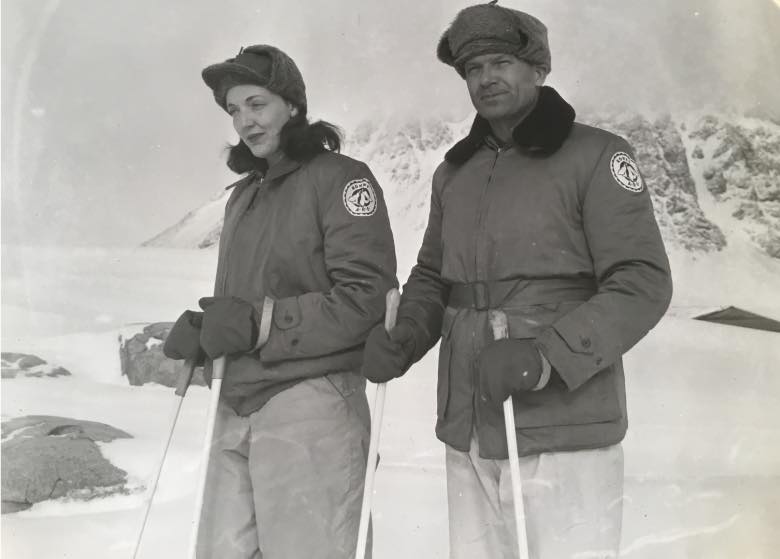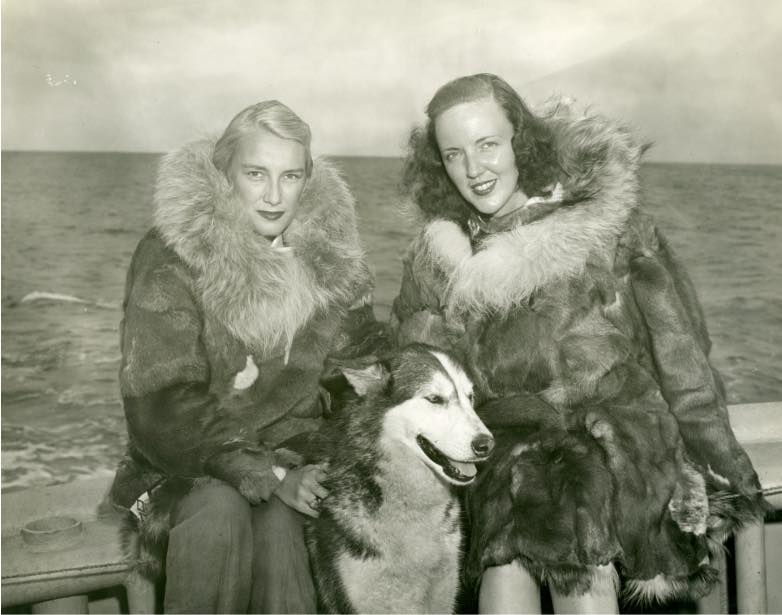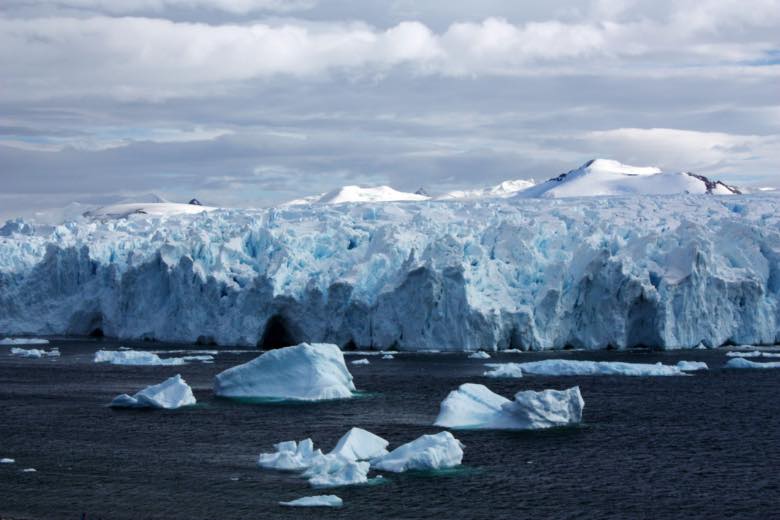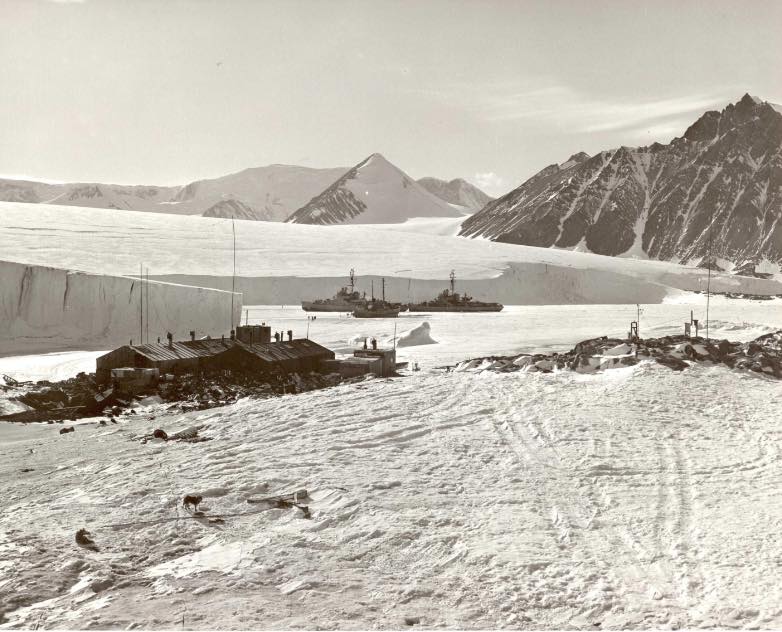The names of Amundsen and Scott are well known because of their race to be the first to conquer the South Pole in 1910-1912. The Norwegian explorer Roald Amundsen was the first to the pole and thus deserves the fame that adorns his memory. But while Robert Falcon Scott, the second, went down in history for tragically losing his life in the attempt, the podium would not be complete without a third milestone, the first woman. The American explorer Jackie Ronne was not the first to set foot on the white continent, but she was the first woman to explore Antarctica; or as she herself titled her autobiography, “Antarctica’s First Lady”.

Edith Ann Maslin (13 October 1919 – 14 June 2009) said in an interview with explorer Brian Shoemaker in 2000 that only those who did not know her called her by her real name. To her family she was always Jackie, and her surname changed when she married polar explorer Finn Ronne at the age of 24. At the time, in 1944, Jackie’s name did not seem destined to be linked to Antarctica, except as “the wife of”. A Baltimore native with a degree in history, she worked as a civil servant at the State Department in Washington during the war.
It was there, around 1942, that a classic blind date through a friend led her to meet US Navy Captain Finn Ronne, a Norwegian-born, naturalised American emigre whose father had travelled with Amundsen, and who had already begun his own career in Antarctic exploration as a member of aviator Richard Byrd’s team. Toward the end of the Second World War, Finn hoped to lead his own expedition, a plan which Byrd attempted to scuttle. And since English was a second language for Finn, it was his wife who handled the paperwork and correspondence.
An unexpected trip
On 25 January 1947, the Ronne Antarctic Research Expedition departed Beaumont, Texas, aboard the military tug ATA-215, which Jackie herself renamed Port of Beaumont. She travelled on board but had no intention of joining the expedition. Her role was to remain in the US as administrator and press liaison, but her husband asked her to sail to Panama to help finalise preparations, and she agreed. He then suggested that she stay as far as Valparaiso, Chile. And then he said, as she recalled: “I think you would be much more helpful to me if you went the whole way.” She flatly refused, but Finn insisted; Jackie eventually relented and joined the expedition as a historian and newspaper reporter, writing articles under her husband’s name, as the press were initially unaware of her presence.

“My suitcase contained little more than a good suit, a good dress, nylon stockings and high heeled shoes,” she would later recount and used to repeat in her lectures. In Punta Arenas, Chile, she procured the necessary equipment, as well as wool and knitting needles. And so began a journey on which she was not the only woman: she asked to be accompanied by the pilot’s wife, Jennie Darlington, who was also travelling on the ship and who accepted the offer as an extended honeymoon, having recently married.
They were not the first women in Antarctica: in 1935, the Danish-Norwegian Caroline Mikkelsen had landed on one of the ice barrier islands, and two years later the Norwegian Ingrid Christensen had set foot on the Antarctic mainland accompanied by her daughter Augusta Sofie and two other women, Lillemor Rachlew and Solveig Widerøe. But Ronne and Darlington were the first to winter in Antarctica. And while the pilot’s wife is attributed a rather passive role—in her memoirs she would write that Antarctica was no place for women—Jackie became the first female Antarctic explorer in her own right.
The Weddell Sea Ice Shelf and other discoveries
During the 15-month expedition, Jackie lived with her husband in a cabin of just over 13 m2. She participated in the scientific observations, mainly seismological and tidal, without forgetting her original task. The expedition explored nearly 650,000 km2 of territory and mapped almost 1.2 million km2 from the air, including the Weddell Sea coast, then the last great unexplored coastline on the planet. Among the expedition’s many discoveries, it showed that the Ross and Weddell Seas were not connected, and that Antarctica was therefore a single continent. The Weddell Sea ice shelf was named by Finn after his wife. It is now called the Filchner-Ronne Ice Shelf, also honouring Finn himself and his father.

All 23 members of the expedition survived, although there was no shortage of serious accidents and personal conflicts. The experience was so harrowing that Jackie vowed on her return to the US, that she would “never, never, never go back to the Antarctic.” She did not re-read her diary until 47 years later and did not publish her memoirs until 2004. But by then she had returned to Antarctica more than a dozen times—once with her daughter Karen—as a lecturer on cruise ships, spreading the word about the wonders and fragility of the white continent, of which she said, “You might have had it up to your eyebrows, but after a while, the raw, icy magnificence brings you back.”

Jackie Ronne passed away from cancer and Alzheimer’s at the age of 89, a recognised and inspirational figure in the exploration and protection of Antarctica. As her biographer Joanna Kafarowski writes in her book Antarctic Pioneer: The Trailblazing Life of Jackie Ronne (Dundurn Press, 2022), “she paved the way for other women who would work in, explore, and make policy decisions about Antarctica far into the future.”
Comments on this publication